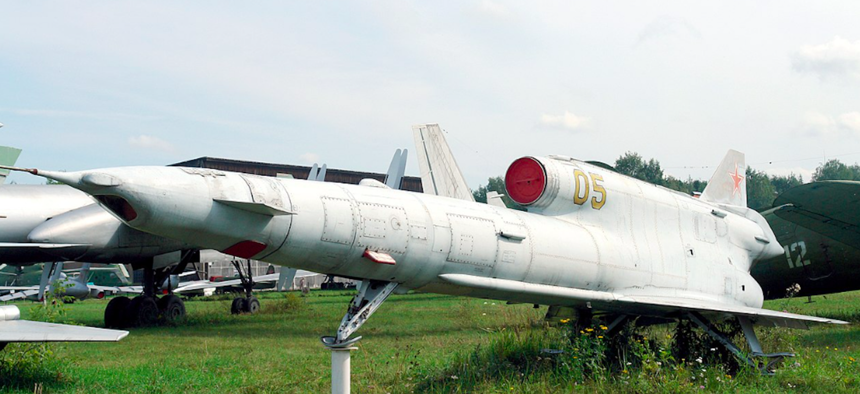PATRICK TUCKER

Explosions at the Dyagilevo and Engels airbases deep within Russia suggest that Ukraine can strike the very outskirts of Moscow—and, perhaps, that U.S. officials may need to revisit their rationale for withholding various long-range weapons.
On Monday evening, the Russian Ministry of Defense said modified versions of the Soviet-era Tupolev Tu-141 Strizh reconnaissance drones had struck air bases at Engels, 372 miles from Ukrainian-controlled territory, and at Dyagilevo, 122 miles southeast of Moscow. It blamed the strikes on “the Kyiv regime.”
The UK Defence Ministry, citing “multiple open sources,” said at least two Russian Tu-95 Bear Russian bombers had been damaged by an exploding fuel tank at Dyagilyaevo, a home base for heavy bombers.
“The causes of the explosions have not been confirmed,” the MoD tweeted. “However, if Russia assesses the incidents were deliberate attacks, it will probably consider them as some of the most strategically significant failures of force protection since its invasion of Ukraine.”
Ukrainian officials had no official comment at the time of this writing. On Tuesday, a Russian airfield in the Kursk region was also struck.
If the explosions were indeed a Ukrainian attack, the Tu-141 might well have been the weapon, said Sam Bendett, an adjunct senior fellow at the Center for a New American Security and an Adviser at the CNA Corporation. But he said other possibilities exist. Ukraine might have repaired and repurposed some of the hundreds of Iranian-made Shahed-136 drones that Russia has fired. Or a Ukrainian special-ops team might have snuck into Russia and fired a shorter-range weapon. Or Kyiv’s efforts to build its own long-range cruise missile may have come to fruition.
In 2014, Ukraine had some 68 of the decades-old Tu-144 drones, which function much more like a missile than a modern reconnaissance drone such as a Reaper. As Robert Beckhusen noted at the time, “With its powerful KR-17A turbojet, it zips over a target at a height of nearly 20,000 feet and a top speed of more than 600 miles per hour—all while snapping pictures.” The landing was choppy, requiring a parachute. Why land when you can crash?
No matter the weapon, such strikes would represent a colossal failure of Russian air defenses and show the growing vulnerability of the Russian military.
The breakthrough is significant for a couple of reasons. The United States has been reluctant to give Ukrainian forces MGM-140 Army Tactical Missile System, or ATACMS, missiles, which would allow strikes more than 300 miles into Russia. (Ukraine’s northernmost point is less than 300 miles from Moscow.) The United States has even modified the High Mobility Artillery Rocket Systems launchers, or HIMARS, it has sent to Ukraine to disable their ability to fire ATACMS rockets. In September, Russian officials said sending such long-range missiles to Ukraine would make the United States a direct party to the conflict.
A big part of the reason the United States is honoring that “red line” is out of concern that Russia would view such weapons as a strategic rather than tactical threat.
Moscow views “long-range precision-guided weapons [as] strategic capabilities because of the damage they can inflict on a country’s critical economic and military infrastructure,” Michael Kofman, Research Program Director in CNA’s Russia Studies Program, wrote in 2020.
Bendett said that the attacks within Russian territory could trigger a larger response.
“The real issue is that if such a Ukrainian attack is repeated, it may place lots of Russian military and civilian infrastructure close to Ukraine within sights, making it difficult to defend all and forcing Russian military to prioritize where air defense may be applied,” he said.
No comments:
Post a Comment